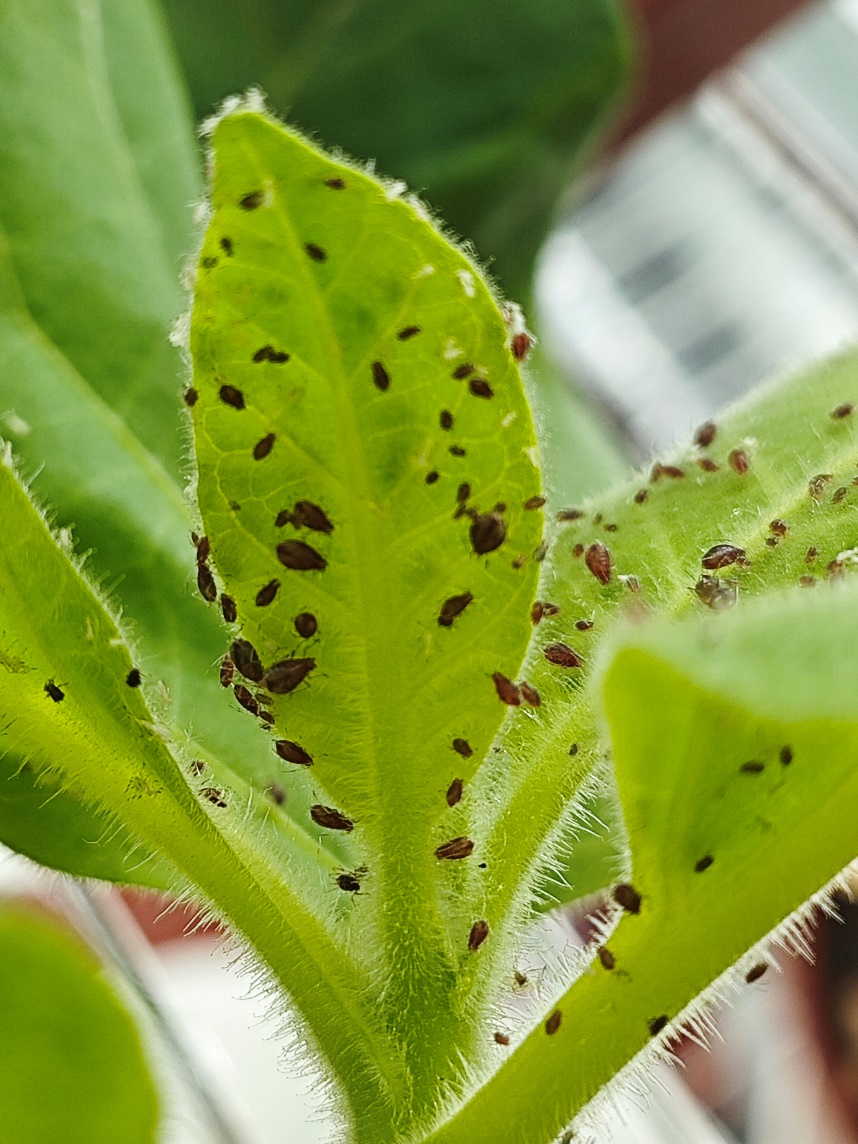The risk for pandemic diseases caused by arboviruses is rising as the dispersal rate of their arthropod vectors increases. During probing and feeding of arthropod vectors, vector-borne viruses are delivered into vertebrate/plant hosts together with the vector’s saliva by stylet injection. In a new study entitled “salivary carbonic anhydrase II in winged aphid morph facilitates plant infection by viruses” published on March 28 in PNAS, a research group led by Professor SUN Yucheng of the Institute of Zoology, Chinese Academy of Sciences, made great progress in understanding the role of vector salivary effectors in complicated virus-plant-insect vector interactions.
Aphids are by far the most important vectors of plant viruses that could transmit more than 300 viruses. They evolved specialized wing dimorphism with wingless and winged morphs under different environments. With regard to virus transmission, winged aphids are more competent vectors due to their high frequency of migration and probing. Despite some understanding of behavioral mechanisms underlying host shifting and the mechanical inoculation by insect vectors, the genetic basis for aphid-derived effectors driving plant virus transmission is largely unknown. Previous study found that insect vectors often deployed some salivary proteins to establish their feeding pathways within hosts and suppress host immunity in favor of feeding. Yet, how salivary components in vectors render viruses more infectious is poorly understood.
By using two plant viruses and their natural vector Myzus persicae and non-vector Acyrthosiphon pisum, researchers tested the hypothesis that conserved salivary proteins of vector insects can facilitate viral transmission. Revealing the crucial role of an aphid-derived effector in accelerating the post-transmission infection in plants was ground-breaking, as it significantly advanced our understanding of two distinct but interrelated aspects of vector biology.
Researchers found that a carbonic anhydrase in aphid saliva promoted the infection process of at least two aphid-transmissible non-persistent viruses in plant tissues. This effect occurs as a result of decreased apoplastic pH leading to increased vesicle trafficking. In addition, researchers demonstrated that this carbonic anhydrase was more highly expressed in winged aphids than wingless aphids, consistent with higher virus transmission by winged aphids. These results are quite novel.
The researchers concluded that the aphid carbonic anhydrase was crucial in shaping the outcome of plant responses to aphid and virus: detrimental to aphid feeding but beneficial to plant virus infection. This discovery provided vital information on targets for mitigating the spread of plant viruses and vectors.

Figure 1 During probing and feeding of aphids, vector-borne viruses are delivered into plant hosts (Image by Huijuan Guo)
Original link: https://doi.org/10.1073/pnas.2222040120
Contact:
SUN Yucheng
Institute of Zoology Chinese Academy of Sciences
Tel: 86-10-64807123
E-mail: sunyc@ioz.ac.cn
Web: http://english.ioz.cas.cn/

